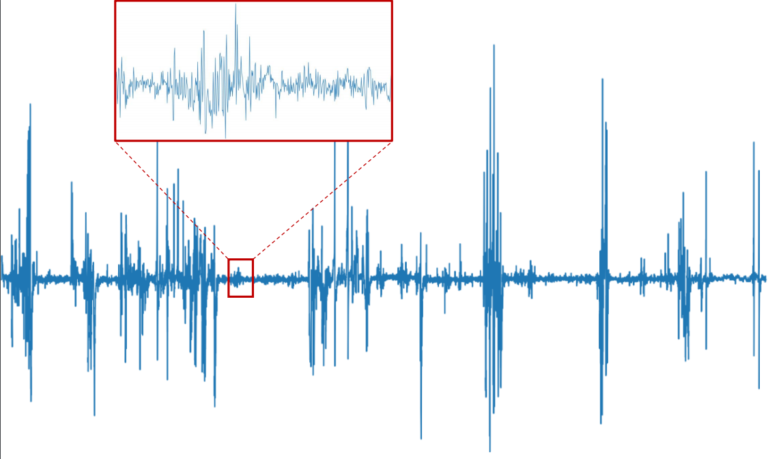e-Prevention Project Overview
Advanced Support System for Treatment Monitoring and Relapse Prevention in Patients with Psychotic Disorders using Long Term Recording and Analysis of Biometric Indexes.
Project Details
Co-financed by the European Regional Development Fund of the European Union and Greek national funds through the Operational Program Competitiveness, Entrepreneurship and Innovation, under the call RESEARCH – CREATE – INNOVATE (project code:T1EDK-02890).
Project duration 2018-2021.

About the Project
The goal of the e-Prevention project is to develop innovative and advanced remote electronic services for medical support that will facilitate effective treatment monitoring and relapse prevention in patients with psychotic disorders (i.e., bipolar disorder and schizophrenia).

Overall architecture of the e-Prevention system.
e-Prevention will develop a novel intelligent system which will offer the possibility for timely diagnosis of psychotic symptom’s relapses and adverse medicine side effects by combining:
- Long-term continuous recordings of biometric indexes through simple wearable sensors (i.e., smartwatches).
- A portable device (tablet) that is used to record short-term audio-visual videos of the patient while communicating with the clinical personnel on weekly basis.
- Parallel studies, medical diagnosis and decisions taken by the psychiatric research group.
- Development of an intelligent data processing and recognition system, which will be based on Cloud computing and processing of large-scale (big) data, providing statistical measurements, detections and estimates of changes and patterns that will facilitate the prediction of clinical symptoms and side effects of the patient’s medication.



Visualization of biometric indexes: user movement and heart rate data, i.e., acceleration data, gyroscope data for all three axis (x, y, z-axis) and data collected by the heart rate monitor (i.e., heart rate and RR-interval data).

Example of acceleration signal.

Examples of extracted features for a single user and one day – gray area denotes sleep (first two columns). Last column: sleep-wake ratio and number of steps per day for two weeks of a user. Missing values show periods of time during which HR could not be detected.

Example of the walking diary of user #A – shown are the steps per day, as well as the effort during walking.

Example of the sleeping diary of user #A – the hours per day spent awake and asleep.

Boxplots for features of controls and patients while awake (top row) and asleep (bottom-row). The bold line represents the median, the boxes extend between the 1st and 3rd quartile, whiskers extend to the lowest and highest datum within 1.5 times the inter-quartile range (IQR) of the 1st and 3rd quartile respectively, and outliers are shown as diamonds.

Differences in steps-per-day and sleep-wake ratio for controls, and patients with psychosis.
Work Plan Highlights
- WP1: Data collection from healthy volunteers and patients. Patient Monitoring-Treatment. Model Evaluation
- WP2: Monitoring sensors and cloud computing infrastructure
- WP3: Multimodal data processing for recognition of changes and trends
- WP4: Development of the integrated e-Prevention System
- WP5: Commercial exploitation of results.
Key Areas/Keywords: Psychotic relapse, prevention of psychotic episode, antipsychotic medication, mood stabilized induced tremor, schizophrenia, bipolar disorder, Signal processing, pattern recognition and machine learning, computer vision and image processing, multimodal human-computer interaction, multi-sensory processing, parallel and distributed processing, cloud systems/computer architecture, biomedical information systems.
Partners
-
 Coordinator: National Technical University of Athens
Coordinator: National Technical University of Athens
School of Electrical and Computer Engineering, Intelligent Robotics and Automation Laboratory (IRAL)
P.I. & Scientific Director: Prof. Petros Maragos -
 University Mental Health, Neurosciences and Precision Medicine Research Institute “COSTAS STEFANIS”
University Mental Health, Neurosciences and Precision Medicine Research Institute “COSTAS STEFANIS”
Laboratory of Cognitive Neuroscience and Sensoriomotor Control
P. I.: Prof Nikolaos Smyrnis -
 Blockachain
Blockachain
Custom software engineering company, operating as a full-service software development company. Blockachain exploits modern design principles, along with the latest blockchain, cloud, mobile and desktop technologies to deliver software of best-in-class performance at affordable prices.
P. I.: Thomas Sounapoglou
Selected Publications
- E. Kalisperakis et al., “Smartwatch digital phenotypes predict positive and negative symptom variation in a longitudinal monitoring study of patients with psychotic disorders” (Frontiers in Psychiatry, 2023)
- E. Fekas et al., “Relapse Prediction from long-term Wearable Data using Self-Supervised Learning and Survival-Analysis” (ICASSP-2023)
- N. Efthymiou et al., “Employing Digital Phenotype Identification for the Discovery of Psychotic Relapses” (ICHI-2023)
- A. Zlatintsi et al., “e-Prevention: Advanced Support System for Monitoring and Relapse Prevention in Patients with Psychotic Disorders Analysing Long-Term Multimodal Data from Wearables and Video Captures” (Sensors, 22(19), 7544, Oct. 2022)
- M. Panagiotou et al., “A Comparative Study of Autoencoder Architectures for Mental Health Analysis using Wearable Sensors Data” (EUSIPCO 2022)
- C. Garoufis et al., “Towards Unsupervised Subject-Independent Speech-Based Relapse Detection in Patients with Psychosis using Variational Autoencoders” (EUSIPCO 2022)
- M. Lazaridi et al., “Can a smartwatch help cognitive neuroscience? the relation between physical activity and cognitive performance in healthy young adults” (SfN Global Connectome, Society for Neuroscience)
- E. Kalisperakis et al., “Smartwatch digital phenotypes relate to positive and negative psychotic symptom variation in a longitudinal monitoring study (e-Prevention) of patients with psychosis” (Neuroscience 2021, SfN)
- C. Garoufis et al., “An Unsupervised Learning Approach for Detecting Relapses from Spontaneous Speech in Patients with Psychosis” (BHI 2021)
- M. Tziomaka et al., “Evaluating mental patients utilizing video analysis of facial expressions” (AIAI 2021, IFIP AI Applications and Innovations Workshops)
- N. Tsilivis et al., “Sparsity in Max-Plus Algebra and Applications in Multivariate Convex” (ICASSP 2021)
- N. Dimitriadis et al., “Advances in Morphological Neural Networks: Training, Pruning and Enforcing Shape Constraints” (ICASSP 2021)
- I. Maglogiannis et al., “An intelligent cloud-based platform for effective monitoring of patients with psychotic disorders” (AIAI 2020)
- G. Retsinas et al., “Person Identification Using Deep Convolutional Neural Networks On Short-term Signals From Wearable Sensors” (ICASSP 2020)
- E. Theodosis et al., “Tropical Modeling Of Weighted Transducer Algorithms On Graphs” (ICASSP 2019)
Presentation of achieved results at conferences and workshops
- 12-17 May 2019: NTUA presented e-Prevention results in ICASSP 2019.
- 04-08 May 2020: NTUA presented e-Prevention results in ICASSP 2020.
- 05-07 June 2020: NTUA presented e-Prevention results in AIAI2020.
- 17-20 June 2021: NTUA presented e-Prevention results in AIAI2021.
- 06-11 June 2021: NTUA presented e-Prevention results in ICASSP 2021.
- 27-30 July 2021: NTUA presented e-Prevention results in BHI 2021.
- 08-11 November 2021: UMHRI presented e-Prevention results in SfN 2021.
- 29 Aug-02 Sep 2022: NTUA presented e-Prevention results in EUSIPCO 2022.
News Highlights
- e-Prevention action: NTUA presented the project in undergraduate and graduate programmes of the School of Electrical and Computer Engineering, National Technical University.
- Final e-Prevention workshop (Tuesday 01/11/2022 online): The final workshop was held online via Webex.
- e-Prevention workshop, NTUA (Tuesday 22 June 2021 online): The workshop was held via Webex.
- Researcher’s Night 2022 (30 September 2022): The project was presented in Athens.
- Researcher’s Night 2021 (24 September 2021): The project was presented through live streaming.
- Researcher’s Night 2020 (27 November 2020): The project was presented through live streaming.
- Researcher’s Night 2019 (27 September 2019): The project was presented in Athens.



